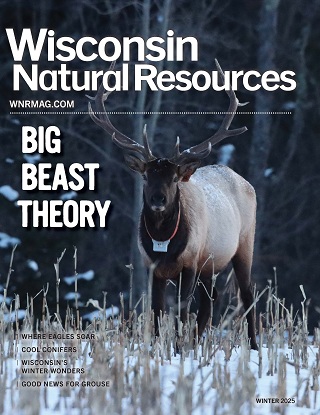Contact: Maureen Ferry, DNR Aquatic Invasive Species Monitoring Coordinator
Maureen.Ferry@wisconsin.gov or 608-381-3231
New Zealand Mudsnails Discovered In Two New Southern Wisconsin Streams
Wisconsinites Urged To Help Prevent Spread Of Invasive Species
MADISON, Wis. – The Wisconsin Department of Natural Resources (DNR) today announced recent monitoring of southern Wisconsin streams has uncovered two new populations of New Zealand mudsnails in Token and Elvers Creeks in Dane County.
Water Action Volunteers from the Rock River Coalition discovered the mudsnails in Token Creek, a trout stream, headwater tributary to Lake Mendota and part of the Yahara Chain of Lakes. This is the first finding of New Zealand mudsnails in the Yahara River and Lake Mendota watershed.
A DNR biologist also discovered a population of New Zealand mudsnails in Elvers Creek, a trout stream in western Dane County north of Mount Horeb. Mudsnails were already known to exist in neighboring watersheds, but the recent finding is the first-known population in the Blue Mounds watershed.
First discovered in Wisconsin in 2012, New Zealand mudsnails have now been identified in ten southern Wisconsin streams within seven different watersheds.
“This is not the first time that citizens have identified a new population of New Zealand mudsnails, and we are all gaining confidence in our detection abilities,” said Maureen Ferry, DNR Statewide Aquatic Invasive Species Monitoring Coordinator. “The DNR and other researchers are assessing streams in southern Wisconsin to determine impacts of mudsnails on fish diets and condition as well as the abundance and diversity of aquatic macroinvertebrates.”
The DNR will work with Water Action Volunteers and partners to assess densities at both sites and monitor their distribution.
INSPECT, REMOVE, DRAIN, NEVER MOVE
The DNR reminds water users statewide to help prevent the spread of New Zealand mudsnails and other aquatic invasive species between waterbodies by following simple steps:
- INSPECT gear for hitchhikers and sediments; and
- REMOVE any attached plants, animals and sediments, scrub and rinse; and
- DRAIN water from all equipment.
- NEVER MOVE plants, animals and sediments.
Before visiting another site, do ONE of the following voluntary steps with your gear:
- FREEZE for eight hours; or
- WASH with 120⁰F hot water; or
- SOAK in 2% Virkon Aquatic solution.
Due to its small size, the New Zealand mudsnail is an aquatic invasive species that can easily hitchhike on a variety of recreational and commercial equipment. Initial invasion pathways to the United States are thought to have been through ballast water or in the water of live game fish shipped from infested waters. Many other pathways may contribute to the secondary spread of New Zealand mudsnails, including waders and other fishing gear, watercraft, commercial construction equipment and fish stocking equipment.
Learn more about New Zealand mudsnails on the DNR New Zealand Mudsnails webpage.

